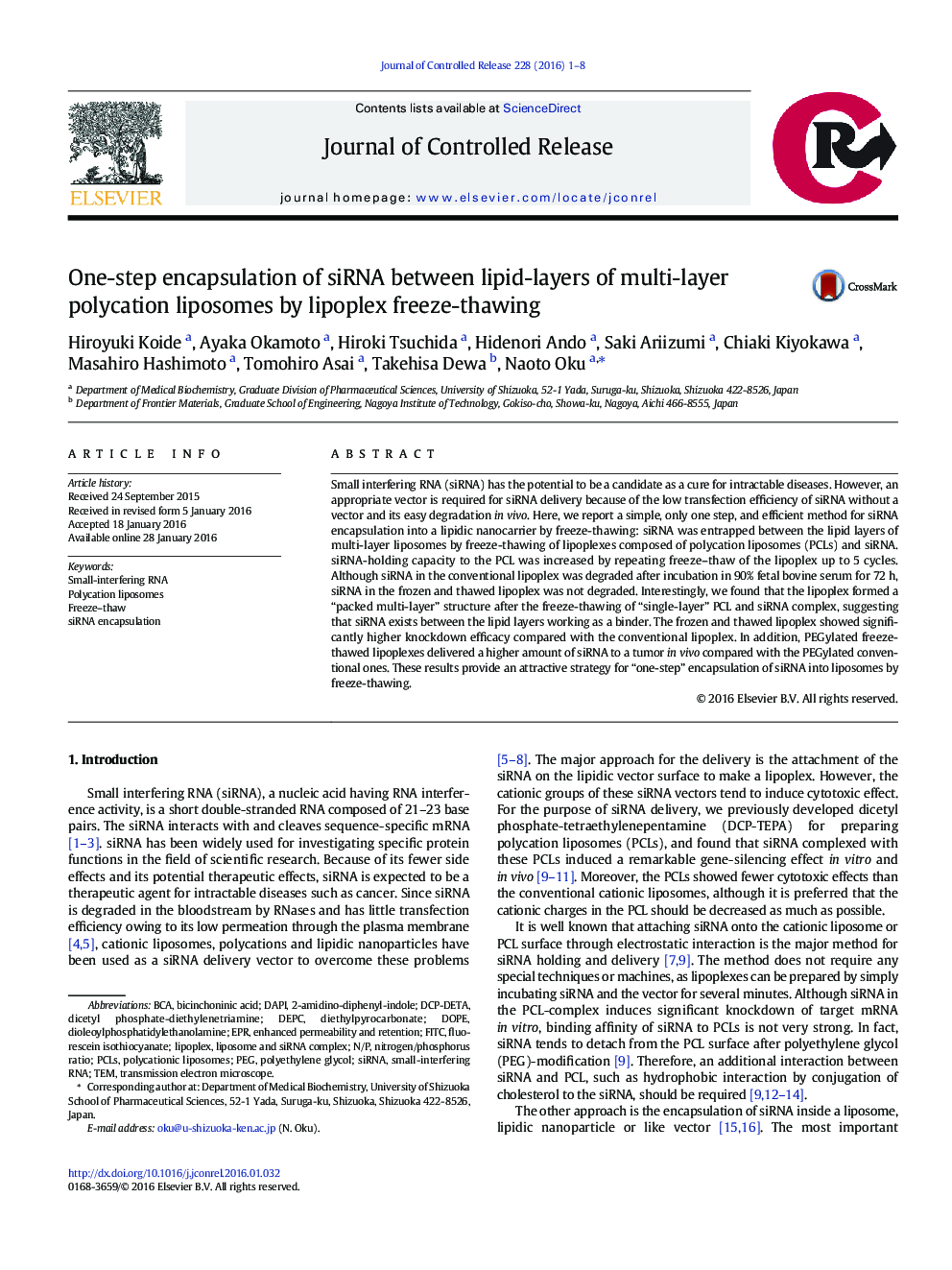| Article ID | Journal | Published Year | Pages | File Type |
|---|---|---|---|---|
| 1423540 | Journal of Controlled Release | 2016 | 8 Pages |
Small interfering RNA (siRNA) has the potential to be a candidate as a cure for intractable diseases. However, an appropriate vector is required for siRNA delivery because of the low transfection efficiency of siRNA without a vector and its easy degradation in vivo. Here, we report a simple, only one step, and efficient method for siRNA encapsulation into a lipidic nanocarrier by freeze-thawing: siRNA was entrapped between the lipid layers of multi-layer liposomes by freeze-thawing of lipoplexes composed of polycation liposomes (PCLs) and siRNA. siRNA-holding capacity to the PCL was increased by repeating freeze–thaw of the lipoplex up to 5 cycles. Although siRNA in the conventional lipoplex was degraded after incubation in 90% fetal bovine serum for 72 h, siRNA in the frozen and thawed lipoplex was not degraded. Interestingly, we found that the lipoplex formed a “packed multi-layer” structure after the freeze-thawing of “single-layer” PCL and siRNA complex, suggesting that siRNA exists between the lipid layers working as a binder. The frozen and thawed lipoplex showed significantly higher knockdown efficacy compared with the conventional lipoplex. In addition, PEGylated freeze-thawed lipoplexes delivered a higher amount of siRNA to a tumor in vivo compared with the PEGylated conventional ones. These results provide an attractive strategy for “one-step” encapsulation of siRNA into liposomes by freeze-thawing.
Graphical AbstractFigure optionsDownload full-size imageDownload high-quality image (272 K)Download as PowerPoint slide
